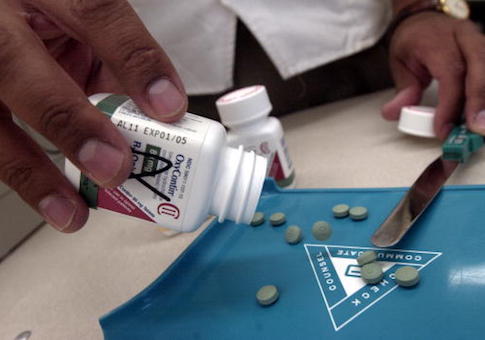Opioid abuse rates have remained steady, but are still shockingly high, according to new data from the National Survey on Drug Use and Health.
8.6 percent of Americans abused opioids in the year 2000, rising to 13.6 percent in 2014, ScienceDaily reports. The 2014 percentage—the most recent year for which data are available—is approximately the same as the rate in 2003, indicating that opioid abuse has been an issue for more than a decade.
"While the illicit opioid use trend seems to have plateaued, there's no evidence of a decline yet," said Mario Moric, M.S., a co-author of the study and a biostatistician. "Hopefully with increased national attention to the problem we will see a significant drop in abuse."
More than 13 percent, almost 1 in 7, of Americans over the age of 12 have abused prescription opioids at some point in their lives. Use of hydrocodone (present in, for example, Vicodin) increased from 3.2 percent in 2000 to 9.1 percent in 2014; oxycontin use increased from 1 to 3 percent in the same period. Hydrocodone is the most frequently prescribed opioid.
"The amount of opioid prescriptions being written in the United States is breathtaking—essentially enough for every American adult to have a bottle of the pain killers in their medicine cabinet," said Dr. Asokumar Buvanendran, M.D., lead author of the study.
"This in turn leads to opioid abuse because people may take more than needed, or the pills fall into the wrong hands. That's got to change," he said.
Opioid prescriptions are often written for an "excessive" number of pills, ScienceDaily noted, which leads to abuse, especially because of the "euphoria" that opioids induce.
The excessiveness of opioid prescriptions has helped lead to a sweeping, national crisis. CDC data released last month showed found that of 64,000 drug overdoses in 2016, 14,400 were attributable to prescription opioids. A further 20,000 were attributable to the highly toxic opiate fentanyl, and 15,000 to heroin — both cheaper, more powerful drugs that addicts turn to when their supply of prescribed opioids runs out.
These deaths, and the continued high rates of opioid abuse, prompted President Donald Trump to on Monday once again promise to declare the opioid crisis a national emergency.
Dr. Buvanendran, for his part, counseled a reduction in prescriptions and an emphasis on the reality that pain requires more than just a pill to solve.
"Opioids are still an important tool for dealing with pain, but doctors need to prescribe fewer quantities. Also, patients need to be educated about the dangers for overuse and abuse and understand that pain usually can't be solved solely with a pill, but needs to include exercise, physical therapy, eating right, having a social support system and developing good coping skills," he said.
